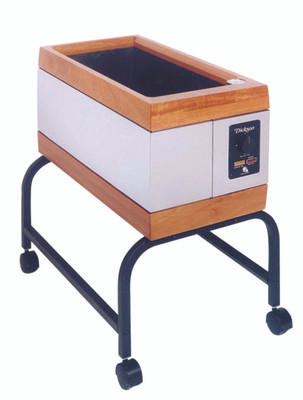 10th Sep 2018
10th Sep 2018
How To Treat Upper Extremity Injuries Effectively
Hand and upper extremity care is a subspecialty in physical therapy and refers specifically to treating areas of the hands, wrists, elbows, fingers and arms. Patients can experience pain and loss of function in this area due to injury, chronic conditions or trauma as a result of overuse in the workplace or during recreational activities. Pain in these areas can also be the result of degenerative or acquired conditions.
Some common conditions of the upper extremities treated in physical therapy include:
- Carpal tunnel syndrome
- Tennis and golfer’s elbow
- Arthritis
- Tendon and nerve damage
- Bone fractures
- Sprains
- Ganglion cysts
- De Quervain’s tenosynovitis (radial styloid tenosynovitis)
- Dupuytren’s contracture (palmar fibromatosis)
While most hand and upper extremity conditions are often the result of overuse, acute traumatic injuries, when patients seek out physical therapy early, it helps greatly reduce the risk of disability, permanent loss of function or the need for additional treatment.
Treatment Options for Upper Extremity Injuries
- Splinting – Most physical therapists utilize custom-made splints as supportive structures for certain injuries or conditions like carpal tunnel. Splints can be used to either improve function or to immobilize an injured limb, depending on the diagnosis and stage of rehabilitation.
- Exercise program – Therapeutic exercise is an important part of rehabilitating upper extremity injuries because it can help Improve range of motion, reduce swelling, increase mobilization, re-educate muscles and build stamina. Using a variety of exercise equipment like weights, resistance bands and hand exercisers, practitioners help patients regain function and strength. Once a patient’s strength and stamina has been improved, an upper extremity exerciser can be an effective device to used to improve range of motion.
- Pain management – One of the first goal in physical therapy for an upper extremity condition is to reduce pain. The ability to control pain will not only increase a patient’s comfort but will also increase tolerance for exercise and prepare muscle tissue for additional work. There are several non-medical techniques that can effectively reduce pain including:
- Cold Therapy: Cold therapy has long been used for its analgesic properties. When used in physical therapy, cold packs or cold compression devices are used to reduce acute pain. The benefit of using a cold compression device is that it marries the pain-reducing effects of cold therapy with the edema-reducing benefits of pneumatic compression.
- Heat: Conversely, heat therapy is also beneficial when treating pain associated with the upper extremities. While acute pain may be best addressed with cold therapy, heat therapy in the form of hot packs can be beneficial in treating chronic pain or pain that radiates to surrounding areas. Trigger point pain specifically can be due to nerve impingement. Heat therapy can not only help reduce pain, but it can help improve tight muscles that are squeezing on nerves resulting in pain.
- Transcutaneous electrical nerve stimulation: Transcutaneous Electrical nerve stimulation or TENS blocks the pain signals from reaching the brain which helps disrupt the pain response. What’s beneficial about TENS is it can be used as part of the physical therapy treatment or patients can use it at home for portable pain relief.
- Paraffin Therapy: Paraffin therapy is another form of heat therapy that is as therapeutically beneficial as it is soothing to patients. Not only does paraffin therapy help reduce acute and chronic pain, it has been found to help increase range of motion which is particularly important for patients that have suffered a loss of ROM as a result of their injury.
- Ultrasound Therapy: Ultrasound therapy is great to use for upper extremity injuries because it is extremely versatile. Different sized soundhead applicators allow practitioners to target treatment to different areas of the body, both large and small. While options like continuous or pulsed and 1MHz or 3 MHz allows practitioners to further set treatment parameters based on a specific injury, area of the body and patient’s needs.
- Patient and family education – Education about the diagnosis, treatment elements, recovery expectations and timing, and how they all work together to smooth the rehabilitation process. Not only will adequate patient education make sure that patients understand their diagnosis and treatment plan, but it will help keep them on-board and compliant when there are home exercise programs put in place.
- Massage therapy – In physical therapy, practitioners use lymphatic massage, soft-tissue release, compression garments and exercise techniques to relieve pain, swelling and improve range of motion.
- Active & Passive Stretching – Practitioners will also use specific range-of-motion stretches, both passive and active, to prevent the muscles and joints from tightening in upper extremity patients. This will also assist with neuromuscular re-education and strengthening to improve functional use.
Contact us today!
We can help your practice find the perfect modality or evaluation tool to help your practitioners treat injuries of the upper extremities. Contact us today and we’ll answer any questions you may have about the benefits of using each device! Call us today at 1-801-770-3328 for more information.






